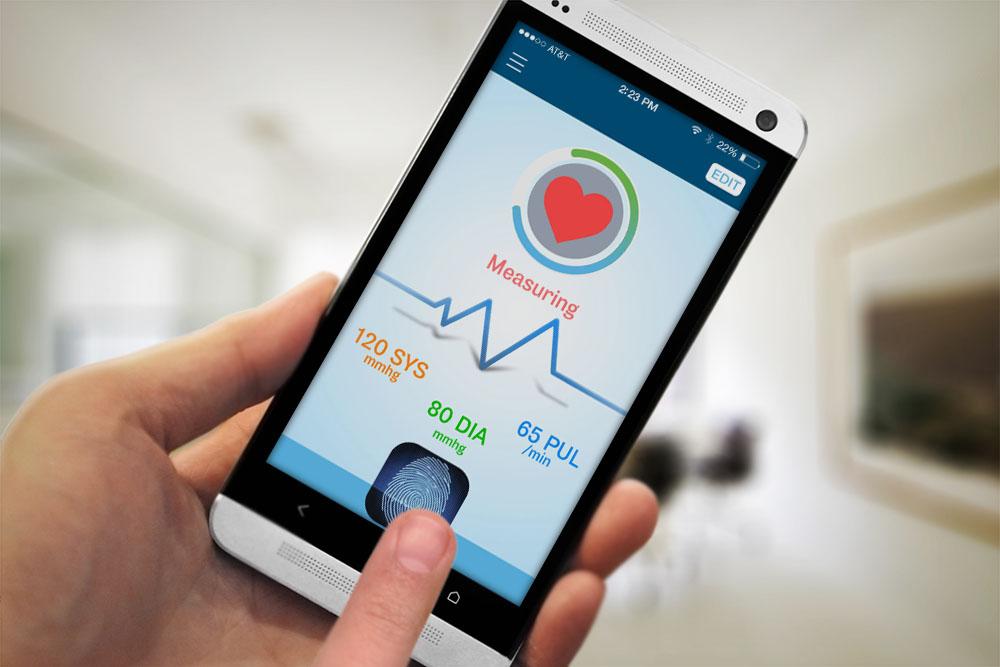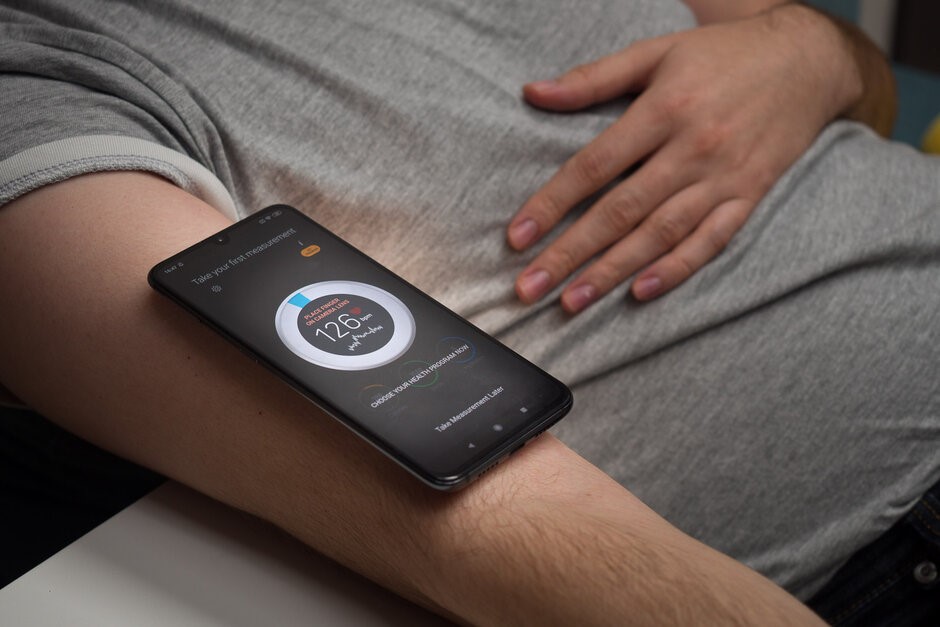Blood pressure apps are revolutionizing the way we monitor and manage our blood pressure. These innovative tools empower individuals to take control of their cardiovascular health, providing convenient and accurate readings right at their fingertips.
From tracking blood pressure trends to sharing data with healthcare providers, blood pressure apps offer a wealth of benefits. Join us as we delve into the world of blood pressure apps, exploring their types, accuracy, data management, integration with healthcare systems, clinical applications, design, and future trends.
Blood Pressure Apps Overview
Blood pressure apps are mobile applications designed to help individuals monitor and manage their blood pressure. These apps typically utilize sensors built into smartphones or external devices to measure blood pressure and provide users with accurate readings.
Blood pressure apps offer various features, including:
- Blood pressure measurement and tracking
- Historical data storage and analysis
- Medication reminders
- Educational resources
li>Lifestyle recommendations
The benefits of using blood pressure apps include:
- Improved self-management of blood pressure
- Early detection of hypertension
- Enhanced communication with healthcare providers
- Increased awareness and understanding of blood pressure
- Convenience and accessibility
Types of Blood Pressure Apps
Blood pressure apps vary in their features and functionality, catering to different user needs. Here are the main types of blood pressure apps:
Self-Monitoring Apps
Self-monitoring apps allow users to track their blood pressure readings over time. These apps typically feature:
- Manual entry of blood pressure readings
- Storage and organization of readings
- Charts and graphs to visualize trends
- Reminders for medication and appointments
Examples: My Blood Pressure Log, Blood Pressure Monitor, BP Journal
Bluetooth-Enabled Apps
Bluetooth-enabled apps connect to compatible blood pressure monitors via Bluetooth technology. This allows for automatic recording of blood pressure readings, eliminating the need for manual entry. These apps often offer additional features, such as:
- Real-time monitoring of blood pressure
- Automated data syncing
- Advanced analytics and reporting
Examples: Omron Connect, Withings Health Mate, iHealth MyVitals
Medication Management Apps
Medication management apps help users track their blood pressure medications and ensure adherence. These apps typically include:
- Medication reminders
- Dosage tracking
- Refill notifications
- Interactions checker
Examples: Medisafe, MyTherapy, Mango Health
Lifestyle Management Apps
Lifestyle management apps focus on promoting healthy habits that can help lower blood pressure, such as exercise, diet, and stress management. These apps typically offer:
- Exercise tracking
- Calorie counting
- Mindfulness and relaxation techniques
- Educational resources
Examples: Lose It!, MyFitnessPal, Calm
Accuracy and Reliability of Blood Pressure Apps

The accuracy of blood pressure apps is measured by comparing their readings to those obtained using a traditional sphygmomanometer, which is considered the gold standard for blood pressure measurement. The accuracy of an app is typically expressed as the mean absolute difference (MAD) between the app’s readings and the sphygmomanometer readings.
A lower MAD indicates higher accuracy.
Factors Affecting Accuracy
- Cuff design:The cuff should fit snugly around the upper arm and be of the appropriate size. An ill-fitting cuff can lead to inaccurate readings.
- Sensor technology:The type of sensor used in the app can affect its accuracy. Some sensors are more sensitive than others and can provide more precise readings.
- Calibration:Blood pressure apps should be calibrated regularly to ensure their accuracy. Most apps have built-in calibration features that can be used to adjust the sensor’s sensitivity.
- User technique:The way the user takes their blood pressure can also affect the accuracy of the reading. It is important to follow the app’s instructions carefully and to take the reading in a quiet, seated position.
Recommendations for Choosing Accurate and Reliable Apps
- Look for apps that have been validated by a reputable organization, such as the American Heart Association or the European Society of Hypertension.
- Check the app’s reviews to see what other users have said about its accuracy.
- Make sure the app has a user-friendly interface and is easy to use.
- Consider the app’s features, such as the ability to track your blood pressure over time, set reminders, and share your readings with your doctor.
Data Management and Security

Blood pressure apps collect, store, and share data to help users track and manage their blood pressure readings. This data includes personal information such as name, age, gender, and medical history, as well as blood pressure readings, medications, and lifestyle factors.Apps may store data locally on the user’s device or on remote servers.
Cloud-based storage offers advantages such as accessibility from multiple devices and automatic backups, but it also raises privacy and security concerns.
Privacy and Security Concerns
The privacy and security of blood pressure data are important considerations. Unauthorized access to this data could lead to identity theft, insurance fraud, or discrimination.Apps should have robust security measures in place to protect user data, such as encryption, access controls, and regular security audits.
Users should also be aware of the app’s privacy policy and understand how their data is used and shared.
Tips for Protecting Personal Data
To protect personal data when using blood pressure apps, users should:
- Choose apps with strong privacy and security features.
- Read the app’s privacy policy carefully before installing it.
- Only share necessary information with the app.
- Use strong passwords and enable two-factor authentication.
- Keep the app updated with the latest security patches.
- Monitor the app’s activity and report any suspicious behavior.
Integration with Healthcare Systems
.png)
Blood pressure apps can integrate with healthcare systems to improve the management of hypertension. By connecting to electronic health records (EHRs), blood pressure apps can automatically share patient data, such as blood pressure readings, medication adherence, and lifestyle information, with healthcare providers.
Benefits of Integrating Blood Pressure Apps with EHRs
- Improved patient care: Integration allows healthcare providers to access a more complete picture of the patient’s health, leading to more informed decision-making and personalized treatment plans.
- Increased efficiency: Automated data sharing eliminates the need for manual data entry, reducing the administrative burden on healthcare providers and allowing them to focus on patient care.
- Enhanced patient engagement: By providing patients with access to their own health data, blood pressure apps can empower them to take an active role in managing their condition.
Examples of Successful Integrations
- The American Heart Association’s My Heart Checkup app integrates with Epic EHR, allowing healthcare providers to view patient blood pressure data and provide remote monitoring.
- The Omron Connect app connects to Cerner EHR, enabling healthcare providers to access patient blood pressure readings and medication adherence data.
Clinical Applications of Blood Pressure Apps
Blood pressure apps are increasingly being used in clinical settings to help manage hypertension. These apps can provide patients with convenient and accurate blood pressure readings, as well as track trends over time. This information can help clinicians make informed decisions about treatment plans and lifestyle changes.
Remote Patient Monitoring
One of the most promising applications of blood pressure apps is for remote patient monitoring. This allows clinicians to track patients’ blood pressure readings remotely, which can help identify trends and potential problems early on. Remote patient monitoring can also help patients stay engaged in their care and motivated to make healthy lifestyle changes.
Clinical Studies
Several clinical studies have evaluated the effectiveness of blood pressure apps. A study published in the Journal of the American Heart Association found that a blood pressure app was effective in reducing blood pressure in patients with hypertension. The study found that patients who used the app had a significant reduction in systolic blood pressure and diastolic blood pressure compared to patients who did not use the app.
Design and Usability of Blood Pressure Apps
The design and usability of blood pressure apps play a crucial role in their effectiveness. User-friendly design can significantly enhance user engagement and adherence to regular blood pressure monitoring.
Design elements such as intuitive navigation, clear instructions, and visually appealing interfaces can make it easier for users to understand and use the app, leading to more accurate and consistent readings.
Guidelines for Designing Effective Blood Pressure Apps
- Simplicity:Apps should be easy to navigate and understand, with minimal clutter and unnecessary features.
- Clear Instructions:Provide clear and concise instructions on how to use the app, including proper measurement techniques.
- Visual Appeal:Use visually appealing graphics, charts, and colors to make the app engaging and easy to read.
- Feedback:Provide immediate feedback on blood pressure readings, including alerts for high or low readings.
- Personalization:Allow users to customize the app to their preferences, such as setting reminders and tracking goals.
- Data Export:Enable users to easily export their blood pressure data for sharing with healthcare providers.
Future Trends in Blood Pressure Apps

The future of blood pressure apps is promising, with emerging trends and potential applications that will enhance their role in healthcare. These apps are becoming more sophisticated, offering personalized experiences, advanced data analysis, and seamless integration with healthcare systems.
One emerging trend is the use of artificial intelligence (AI) and machine learning (ML) to improve the accuracy and reliability of blood pressure apps. AI algorithms can analyze large datasets of blood pressure readings to identify patterns and trends, allowing for more personalized and tailored recommendations.
ML algorithms can also be used to detect hypertension and other cardiovascular conditions at an early stage, enabling timely intervention.
Integration with Wearable Devices
Blood pressure apps are increasingly integrating with wearable devices, such as smartwatches and fitness trackers, which can continuously monitor blood pressure and provide real-time data. This integration allows for more comprehensive monitoring and tracking of blood pressure, enabling users to identify trends and patterns over time.
Wearable devices can also provide additional data, such as heart rate, activity levels, and sleep patterns, which can be valuable for understanding the overall health context of blood pressure readings.
Telemedicine and Remote Monitoring
Blood pressure apps are also playing a significant role in telemedicine and remote monitoring, enabling healthcare providers to remotely monitor patients’ blood pressure and provide guidance and support. This is particularly beneficial for patients in rural or underserved areas who may not have easy access to healthcare facilities.
Telemedicine platforms can facilitate virtual consultations, allowing patients to share their blood pressure readings and receive medical advice remotely.
Preventive Care and Lifestyle Management
Blood pressure apps are becoming increasingly focused on preventive care and lifestyle management. They can provide personalized recommendations for healthy lifestyle changes, such as diet, exercise, and stress management. Some apps also offer educational resources and support groups, empowering users to take an active role in managing their blood pressure and overall cardiovascular health.
Future Potential, Blood pressure apps
The future of blood pressure apps holds exciting possibilities. With advancements in technology and the growing adoption of digital health solutions, these apps have the potential to become even more integrated into healthcare systems and play a crucial role in the prevention, detection, and management of hypertension and other cardiovascular conditions.
Final Summary
Blood pressure apps are poised to transform healthcare, empowering individuals to actively participate in their health management. As technology continues to advance, we can expect even more innovative and sophisticated blood pressure apps that will redefine the way we monitor and maintain our cardiovascular health.
FAQ Overview
Are blood pressure apps accurate?
The accuracy of blood pressure apps varies depending on the device and algorithm used. However, many apps have been validated and shown to provide reliable readings comparable to traditional blood pressure monitors.
How do blood pressure apps work?
Blood pressure apps typically use sensors to measure blood pressure through the finger or wrist. The sensors detect the pulsations of blood flow and use algorithms to calculate blood pressure readings.
What are the benefits of using blood pressure apps?
Blood pressure apps offer several benefits, including convenience, tracking trends, sharing data with healthcare providers, and promoting adherence to medication regimens.